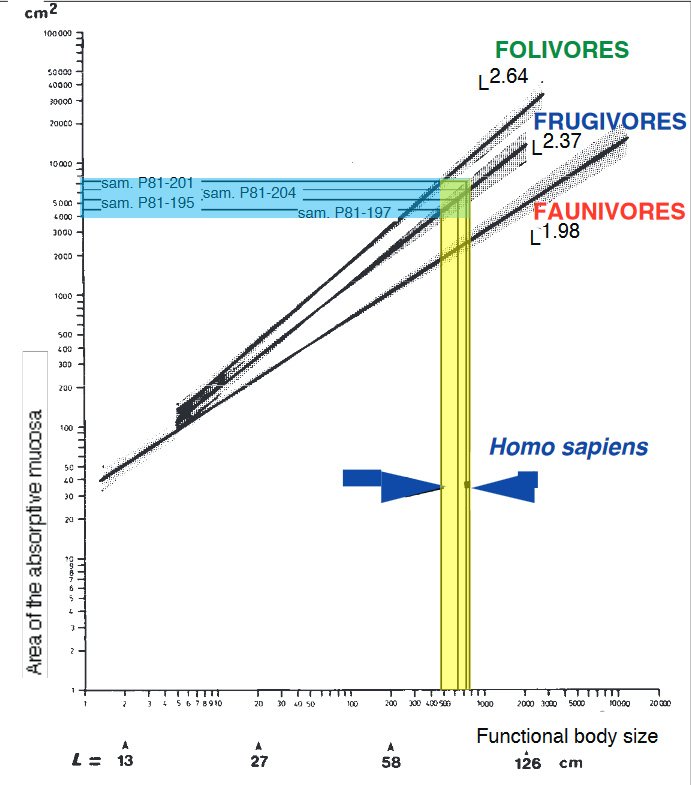Human animals have a certain biological, physical and anatomical design, just as other animals do. No animal species is exactly the same as another species, but there are certain commonalities. For instance, all animals have animal cells. There are even specific categories of animals, such as mammals, who all have teeth, eyes, ears, mouths, lungs, brains, bones, etc.
Looking into specific aspects of anatomy, we can find similarities and differences according to different categories. One of these categories is the dietary class, which is to understand how the physical anatomy is structured in order to facilitate the consumption of specific dietary foods.
Human physiology can show us how the body works. When looking at diet, people can get confused between what our physiology allows us to do in order to survive, compared to what our physiological is optimally designed to do. Just because we can eat something in order to survive, doesn't mean it's an optimal source of food.
We can better understand how to optimally thrive by looking at what certain categories of food due to our bodies. But we can also look at other animal species, their physiological and anatomical design, and seeing what their dietary class is. Then we can compare their anatomy two hours in order to better understand what we are actually designed to eat, not for mere survival, but for a thriving optimized level of health.
Mammals can generally be categorized into four or five categories for their dietary class:
- carnivore
- omnivore
- herbivore
- frugivore
- foliovore
Here is a chart comparing the various types of mammals and their dietary class:

The full chart is at the bottom.
You can see through comparative anatomy, by the way our bodies are constructed and designed, that we match most closely the category of frugivore and herbovore, but more so a frugivore. We are not designed as natural omnivores, despite the claims to the contrary. We can survive through an omnivorous diet, but that is not what we are optimally designed to eat.
The following is a short list of how we match herbivores and frugivores, not carnivores or omnivores.
- a small mouth opening relative to the size of our head
- the construction of our jaw
- lateral chewing motion, not sharing and crushing
- the need to chew our food, as opposed to swallowing large chunks
- more facial muscles to help with chewing
- dull and short teeth, not long and sharp
- mostly alkaline saliva, not acidic
- medium stomach acidity, not high acidity
- small intestines about nine times our body length, not three times
There are more to see in the full chart at the bottom.
Also, looking at three distinct group of species and their major dietary patterns, a high quality diet for a species can be determined by the looking at the functional body size relative to the absorptive mucosa of the digestive tract.
Here is a chart showing that humans line up perfectly with the diet of frugivores, not foliovores (foliage-leaf eaters) or faunivores/carnivores (meat eaters).

Source: Claude Marcel Hladik, Patrick Pasquet. The human adaptations to meat eating: a reappraisal. Human Evolution, Springer Verlag, 2002, 17, pp.199-206
Gut measurements of primate species do not support the contention that human digestive tract is specialized for meat-eating, especially when taking into account allometric factors and their variations between folivores, frugivores and meat-eaters. The dietary status of the human species is that of an unspecialized frugivore, having a flexible diet that includes seeds and meat (omnivorous diet)
We are flexibly designed to survive in other ways than what is a high quality optimal diet for health. We can survive as omnivores as part of the design capabilities in our biology, but that isn't the best way for us to live, it's only about being able to survive. To thrive and be in optimal health, we are designed as frugivores. All the science points to this reality.
Full Size Chart:

Very nice presentation brother, I'll reestem this as more people should be exposed to this obvious fact.
Top imformation
I would say we're starchivores (term from Mic the Vegan) =) , cause our brains developed when we learned how to dig and cook starches, which made it more digestible and a great source of calories and glucose
i've seen counter arguments to this table where people say that the two sharp teeth, i think they call them canines, which are on top set of teeth to the side of front teeth mean that we are adapted to meat eating... what do u say to those ppl, cos obv i know thats a load of crap
Comparing Humans to big cats is no different to comparing earth worms to whales. We are different species. People will use whatever BS they want to justify their palate. There is a simple logic here, when we look at our physical make up, from mouth to anus we are designed to eat fruits, veggies in no way are we designed to eat meat, hell its a class 2a carcinogen! Probably causes cancer. Now I dont know of any fruit or veggie that causes cancer...